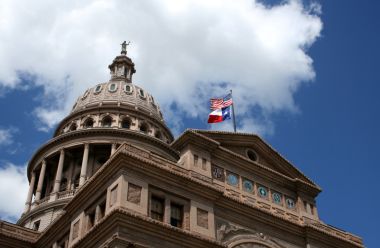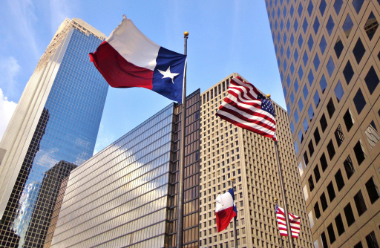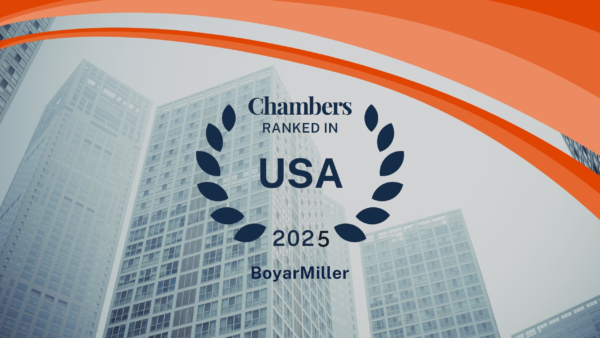With a deep understanding of your business alongside clear and honest communication, we help clients face challenges fearlessly.
Contact us today to learn more about our services and how we can help drive solutions.
UPDATE: More Guidance from The SBA: New Interim Final Rule with Guidance on The Paycheck Protection Program
July 6, 2020
The Small Business Administration has published a third Interim Final Rule giving further guidance on eligibility criteria and loan forgiveness under the Paycheck Protection Program (“PPP”). While this new Interim Final Rule seems tailored to self-employed individuals that file a Form 1040, Schedule C (Profit or Loss from a Sole Proprietorship), it may also be instructive for other borrowers seeking to apply for a PPP loan and loan forgiveness.
Are self-employed individuals eligible?
Self-employed individuals that live in the United States were in operation on February 15, 2020, and filed a Form 1040 Schedule C for 2019 are eligible to receive a PPP loan. It seems this new requirement to have filed a Form 1040 Schedule C for 2019 will prohibit many self-employed individuals that recently began their businesses from being eligible for PPP loans, but the SBA plans to issue more guidance on self-employed individuals that were not in operation in 2019 but were in operation on February 15, 2020.
One important point of clarification made by this Interim Final Rule is that a partner in a partnership or member of an LLC that is taxed as a partnership is not eligible to apply for a PPP loan as a self-employed individual. That is because “self-employment income of general active partners” may be reported as a payroll cost up to $100,000 annually on a PPP loan application of the partnership. Although still unclear (hopefully further guidance on this point will be provided by the SBA), we believe that the “self-employment income of general active partners” refers to guaranteed payments paid by a partnership or LLC to partners or members providing services to such partnership or LLC.
How does a self-employed individual calculate the maximum loan amount?
The key takeaway from the Interim Final Rule for calculating the maximum loan amount for a self-employed individual is determined by the 2019 net profit of the individual as reported on the 2019 FORM 2040 Schedule C. More specifically, for self-employed individuals that do not have employees, the calculation is as follows: 2019 average monthly net profit amount multiplied by 2.5, plus any outstanding economic injury disaster loan (“EIDL”) made between January 31, 2020, and April 3, 2020, that borrower seeks to refinance, minus the amount of the emergency advance received under the EIDL program. Similar to other limitations in the CARES Act, the 2019 average monthly net profit amount is limited to $100,000 annually or $15,385 per individual for the 8-week covered period. If a self-employed borrower employs others, the amount of payroll costs for such employees as defined in the CARES Act and Interim Final Rules issued by the SBA may be added to the amount of the 2019 average monthly net profit to determine the total loan eligibility amount.
What documents are needed with my application?
Self-employed individuals must supply (i) documentation to show that the business was in operation on February 15, 2020, (ii) 2019 Form 1040 Schedule C, and (iii) if the self-employed individuals has employees, Form 941 and state quarterly wage unemployment insurance tax reporting forms from each quarter in 2019. If the borrower does not have a Form 941 or state quarterly wage unemployment insurance tax reporting forms, equivalent payroll processor records can be provided, along with evidence of any retirement and health insurance contributions.
How can proceeds of a PPP loan be used by self-employed individuals?
All uses remain the same as for other businesses (i.e. employee payroll costs, rent, mortgage interest payments, utilities and refinance of an EIDL loan, if applicable), except that self-employed individuals can also use the loan proceeds for owner compensation replacement (i.e. paying the self-employed individual the average monthly net profit amount) during the 8-week period after the loan proceeds are disbursed. With respect to use of proceeds on eligible expenses other than payroll costs, only those eligible expenses (i.e., rent, utilities, etc.) that the self-employed individual claimed deductions for in 2019 can be paid using PPP loan proceeds.
Do the same loan forgiveness rules apply to self-employed individuals?
The loan forgiveness rules are generally the same for self-employed individuals as other recipients of a PPP loan, except (i) owner compensation replacement as paid during the 8-week period after loan proceeds are disbursed are eligible for forgiveness, provided, that it will be capped at an amount equal to a proportionate 8-week share of the borrower’s 2019 net profit as reflected on the borrower’s 2019 Form 1040, Schedule C, but excluding any amount for which a credit is claimed under Section 7002 and Section 7004 of the Families First Coronavirus Response Act, and (ii) in order for proceeds used to pay expenses other than payroll costs to be eligible for forgiveness, they must have been the same kind of expenses that were deducted on the borrower’s 2019 Form 1040 Schedule C.
What documents are needed with my request for loan forgiveness?
Self-employed individuals must supply (i) evidence showing how the loan proceeds were used, and (ii) if the self-employed individuals has employees, Form 941 and state quarterly wage unemployment insurance tax reporting forms from each quarter in 2019.
UPDATES and CLARIFICATIONS:
The amount of loan forgiveness for owner compensation was capped at an amount equal to a proportionate 8-week share of the borrower’s 2019 net profit as reflected on the borrower’s 2019 Form 1040, Schedule C; however, the Interim Final Rule posted June 22, 2020, indicates that (i) for owner-employees and self-employed individuals which elect to use an 8-week covered period, the amount of loan forgiveness requested for payroll compensation is capped at eight weeks’ worth (8/52) of 2019 compensation (i.e., approximately 15.38 percent of 2019 compensation) or $15,385 per individual, whichever is less, in total across all businesses, and (ii) for all other owner-employees and self-employed individuals who will have a 24-week covered period, the amount of loan forgiveness requested for payroll compensation is capped at 2.5 months’ worth (2.5/12) of 2019 compensation (i.e., approximately 20.83 percent of 2019 compensation) or $20,833 per individual, whichever is less, in total across all businesses.



